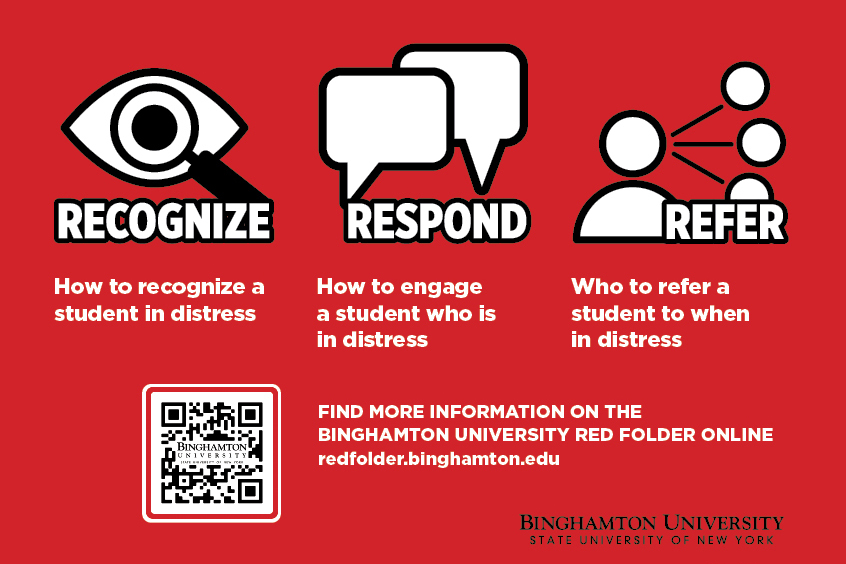Renewed Red Folder initiative helps identify and support students in distress

College can be a massive stressor for students, and the toll of a rigorous academic load often exacerbates existing physical, mental and behavioral health concerns or creates new ones. Binghamton University’s renewed Red Folder initiative is a step toward helping faculty and staff effectively recognize and support students in distress.
Led by the University’s Healthy Campus Initiative, the folder has been updated and is being re-released this year along with a companion website. Hard copies of the new folder will be distributed across campus, and the website will be updated frequently to include new resources, examples of how faculty might respond in frequently reported types of scenarios and additional information.
The University adopted the Red Folder initiative more than a decade ago to help faculty and staff recognize when students are struggling so they could respond in a way that is supportive and ensures the safety of the University community, and also refer students to campus support systems. Universities across the country publish red folders, which serve as quick reference guides for faculty and staff to use if a student in their class or office is exhibiting signs of distress. The folder lists common signs of distress in students and, through a level system that assigns an urgent/concerning or emergency priority to various situations, directs faculty to the best methods of assistance and appropriate reporting channels.
The level system outlines specific guidelines for how faculty and staff should respond to students in emergency versus urgent/concerning scenarios. For example, a physical indicator of an emergency scenario could include observable signs of serious injury, such as cuts or bruising. In an urgent/concerning scenario, a physical indicator could include marked changes in physical appearance such as sudden weight loss/gain.
“We know our faculty and staff care about the well-being of our students and want to support them in the best possible way,” said Johann Fiore-Conte, associate vice president for student affairs and chief health and wellness officer. “These Red Folders are designed to make the many levels of support offered by the University clear and easy to reference in potentially fraught situations.”
Each level refers faculty and staff to specific responses and methods of referral, ranging from pulling the student aside for a conversation to submitting a CARE Team referral form or even contacting University Police in extreme cases of imminent danger. The folder aims to help faculty and staff support students in the best way possible and illustrates the appropriate channels to use for that support. It also reminds faculty and staff of their obligations as private (as opposed to confidential) resources to report incidents of sexual violence to the Title IX Office.
Folders and accompanying resources will be distributed in bulk to division and dean’s offices for faculty and staff across the University in early October. If additional copies are needed, contact studentaffairs@binghamton.edu.

